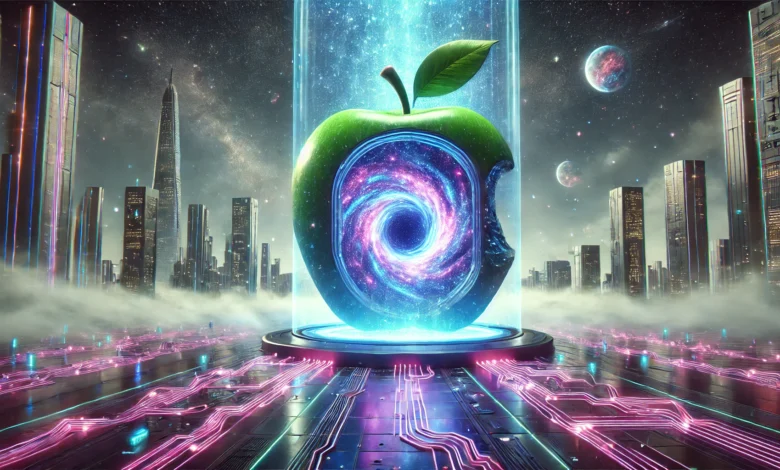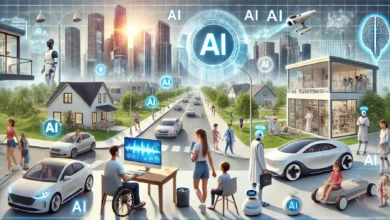Apple Teleport: The Futuristic Vision That Could Redefine Technology

Introduction: Why Everyone is Talking About Apple Teleport
The tech world loves bold ideas, and few companies embody that spirit better than Apple Teleport. For decades, Apple has been at the forefront of innovation—whether it was the personal computer revolution, the smartphone era with the iPhone, or the wearable wave with the Apple Watch. Now, conversations are surfacing about something that feels like science fiction: Apple Teleport.
At first glance, the term “Apple Teleport” might sound like a gimmick or just another buzzword. But in the age where technology is moving toward augmented reality, artificial intelligence, and spatial computing, teleportation—or at least a digital form of it—doesn’t seem as impossible as it once did. Apple has always thrived on taking radical concepts and turning them into accessible products for everyday use.
So, is Apple really working on teleportation? Or is “Apple Teleport” just an ambitious metaphor for its next big leap in seamless digital connectivity? Let’s dive deeper and explore what this futuristic term could mean, why it has captured so much attention, and how it might reshape not just Apple’s ecosystem but the very way humans interact with technology.
What Exactly is Apple Teleport?

When people hear Apple Teleport they often imagine instant travel from one location to another—a Star Trek-like experience where you step into a chamber and materialize across the globe in seconds. But in the tech context, teleportation doesn’t always mean physical relocation. Instead, it often refers to instant digital presence, the ability to transfer not just data but entire immersive experiences in real-time.
Apple Teleport could be Apple’s way of describing the future of hyper-connected devices. Imagine a world where your Mac, iPhone, iPad, Vision Pro headset, and even your car are linked so tightly that moving from one to another feels like teleportation. You could start a project in one place and instantly pick it up in another with zero lag, no file transfers, and no setup hassles. That seamless transition, on a global scale, is a kind of “digital teleportation.”
Of course, knowing Apple’s history, it may not stop there. The company has invested billions into augmented reality (AR) and artificial intelligence. Apple Teleport could also mean creating a system where people can teleport their digital selves—holograms, avatars, or even realistic virtual doubles—into virtual meetings, AR spaces, or shared environments. Think FaceTime, but instead of just a flat video, you appear as a fully interactive presence in someone else’s room.
The Technology Behind Apple Teleport: Is It Possible?
Skeptics might roll their eyes at the idea of teleportation, but the seeds of Apple Teleport are already here. Let’s look at the underlying technologies that could make it real.
First, Apple Teleport ecosystem is already built on continuity and seamless integration. Features like Handoff, AirDrop, and Universal Control allow users to move across devices almost effortlessly. These small steps show that Apple has been quietly laying the groundwork for something much bigger—a future where device boundaries practically disappear.
Second, Apple Teleport investment in spatial computing through the Vision Pro is a massive clue. Spatial computing is all about blending digital content with the physical world. If Apple can use Vision Pro to anchor holograms, 3D avatars, or immersive workspaces in real environments, then teleporting a digital “you” across the world becomes less of a fantasy and more of an engineering challenge.
Third, let’s not forget Apple’s advancements in AI and cloud services. Imagine combining Siri’s evolution with machine learning, edge computing, and ultra-fast 6G connectivity. Suddenly, it’s feasible to project your digital likeness anywhere, anytime, in a way that feels instant and natural. Apple Teleport might not be a sci-fi teleportation booth, but a hybrid of AI-driven avatars, real-time holography, and device continuity.
Why Apple Teleport Could Be Apple’s Next Big Leap
Apple doesn’t throw its weight behind half-baked ideas. If Apple Teleport becomes real, it’s because the company sees it as a revolutionary step that fits into its long-term vision. And honestly, it makes perfect sense.
Firstly, the world is moving toward hyper-connectivity. Work, social life, and entertainment are no longer bound by geography. Apple Teleport could be the bridge that makes distance irrelevant—whether you’re attending a work meeting in Tokyo from your couch in New York or sharing a birthday dinner virtually with family across continents.
Secondly, Apple thrives on building ecosystems, not products. The iPhone wasn’t just a phone—it became a hub for apps, services, and accessories. Apple Teleport could be that same kind of central pillar for the next era of computing. By offering users instant transitions between physical and digital spaces, Apple could lock in customer loyalty for another generation.
Finally, there’s the sheer wow factor. Apple is known for creating moments that make the world stop and pay attention. The first iPhone keynote. The Apple Watch launch. The Vision Pro reveal. Apple Teleport could be the jaw-dropping announcement of the next decade—the kind of technology that cements Apple’s reputation as not just a tech leader, but a visionary company that makes the impossible feel normal.
How Apple Teleport Could Change Daily Life
Let’s imagine what daily life might look like with Apple Teleport fully integrated into our routines. The possibilities are both exciting and almost overwhelming.
For remote work, the impact would be huge. Instead of staring at Zoom grids, you could literally Apple Teleport into a digital conference room, interact with 3D charts, and collaborate with teammates as if you were physically there. This would revolutionize industries that rely heavily on human presence, from education and healthcare to design and engineering.
On the personal side, Apple Teleport could transform social experiences. Picture attending a live concert on the other side of the world without leaving your living room. Your digital self could stand in the crowd, dance with friends, and even interact with artists in real-time. For families separated by distance, teleportation could create moments that feel more authentic than video calls ever could.
And let’s not forget entertainment and creativity. Imagine teleporting into a movie scene, exploring a 3D story world, or even collaborating with others on virtual art projects. Apple Teleport could bring a level of immersion that blurs the line between reality and imagination, opening up new creative frontiers.
Challenges Apple Will Face with Teleportation
Of course, no revolutionary technology comes without obstacles. For Apple Teleport to become reality, the company will need to tackle some major challenges.
The first is technical feasibility. Real-time holograms, seamless device integration, and global-scale low-latency connections require cutting-edge infrastructure. Even with Apple Teleport resources, achieving this at a consumer-friendly level is no small task.
The second challenge is privacy and security. If people are teleporting their digital selves into workplaces, homes, or social spaces, the risk of misuse skyrockets. Apple Teleport has always marketed itself as a privacy-first company, but Teleport would push that promise to its absolute limits.
Finally, there’s social adaptation. Even if Apple Teleport builds a flawless teleportation system, will people embrace it? Technology adoption depends as much on psychology as it does on engineering. Apple will need to convince people that digital teleportation is not only safe but also genuinely beneficial to their lives.
Could Apple Teleport Be the Future of Human Interaction?
The big question isn’t just whether Apple Teleport is possible, but whether it represents the future of human interaction. And honestly, it just might.
Think about how far we’ve come in a few short decades. The internet was once considered a niche tool; today, it’s the backbone of modern life. Smartphones were once a luxury; now they’re practically extensions of our bodies. If Apple Teleport succeeds, it could become the next step in that evolution—a way for humans to transcend geography and connect in richer, more meaningful ways.
In a sense, Apple Teleport could redefine what “being present” means. Presence might no longer require physical proximity but instead become a spectrum that blends physical and digital states. For businesses, education, entertainment, and relationships, that redefinition could open doors we’ve only just begun to imagine.
Conclusion: The Dream of Apple Teleport
Apple Teleport may sound like science fiction today, but so did smartphones, wireless earbuds, and spatial computing just a few years ago. Apple has a history of turning impossible dreams into everyday tools, and teleportation—at least in the digital sense—feels like the kind of challenge the company was built to take on.
Whether it arrives as a literal product, a suite of features, or a metaphor for the next stage of Apple’s ecosystem, Apple Teleport symbolizes something bigger: the human desire to connect without limits. If Apple delivers, it won’t just change technology—it will change the way we live, work, and experience the world.
In the end, teleportation might not mean stepping into a sci-fi pod and materializing in Paris. But with Apple Teleport vision, teleporting your digital self across the globe could become just as powerful—and maybe even more transformative.



